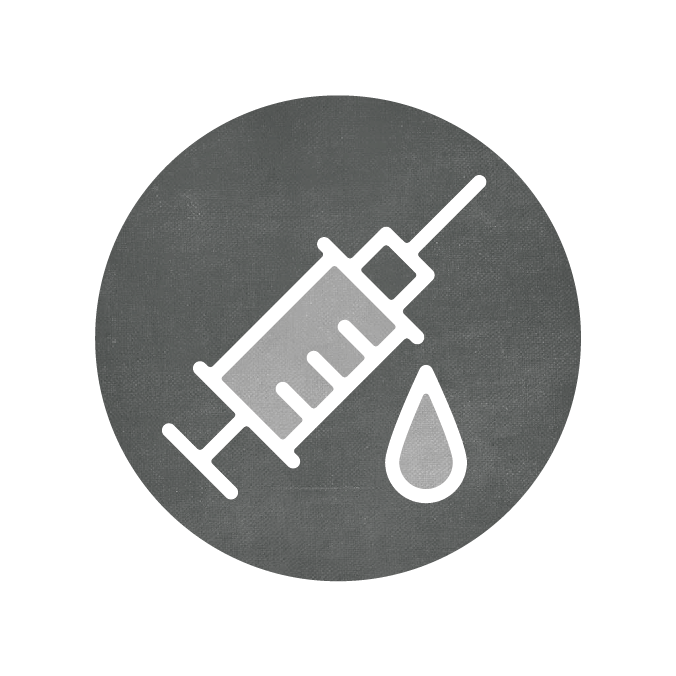How Sexual Health Impacts Health
Sexual health includes sexually transmitted infections (STIs), contraception, and access to reproductive health care services. It also includes interpersonal attitudes and societal norms related to sexuality and relationships. Comprehensive school-based sexual health education, community programs, and reproductive health care can foster attitudes and behaviors leading to safe and respectful sexual experiences. Healthy sexual relationships and a reduction in STIs, unintended pregnancy, and intimate partner violence enhance overall well-being and quality of life.
Indicators on this page:
Teen Birth Rate
Why this is important: Delaying pregnancy and childbearing until adulthood gives teens more opportunity to complete high school, pursue additional education or training, and fully develop physically and psychologically. Teenage pregnancy is associated with lower educational attainment for parents, increased health risks for babies and children1, and premature death2 of mothers. Comprehensive sexual health education and easy access to quality reproductive health services help prevent teenage pregnancy and support teens’ sexual and reproductive health and well-being3.
Definition: Number of live births per 1,000 females age 13-17 years

Trend: The teen birth rate in Whatcom County has been decreasing significantly since 2001.

Geography: The teen birth rate in 2022 was about the same in Whatcom County as Washington state.

Disparities: Disparities exist for teenage birth rate among race in Whatcom County. Hover over the data in the subpopulation tabs to discover more.
Learn more:
- GRADS Program, Bellingham Public Schools.
- About Teen Pregnancy, Centers for Disease Control and Prevention.
- The Adverse Effects of Teen Pregnancy, Youth.Gov.
Sexually Transmitted Infection Rate
Why this is important: Sexually transmitted infections (STIs) impact sexual and overall health; while some are easily treated, others can have serious or long-term consequences. Comprehensive sexual health education and access to sexual health services are crucial for the prevention, early intervention, and treatment of STIs.
Definition: Rate of reported cases of STIs per 100,000 individuals; STIs include chlamydia, gonorrhea, primary and secondary syphilis, and human immunodeficiency virus (HIV)

Trend: The rate of sexually transmitted infections in Whatcom County has been increasing significantly since around 2008.

Geography: The rate of sexually transmitted infections in Whatcom County was higher than the rate of STIs in Washington state in 2022.

Disparities: Disparities in STI rates exist among age groups and between sexes. Hover over the data in the subpopulation tabs to discover more.
Learn more:
- Sexually Transmitted Infections, Whatcom County Health and Community Services.
- Sexually Transmitted Infections Data, WA State Department of Health.
Chlamydia Infection Rate
Why this is important: Chlamydia is a common, treatable sexually transmitted infection that can affect anyone. It often does not cause symptoms, but if left untreated, it can lead to serious problems like pelvic inflammatory disease and infertility. If a pregnant person has chlamydia, they can pass it to their baby during birth, which can cause preterm births. Using condoms and getting regular STI screenings and, if necessary, early treatment can stop chlamydia and prevent permanent reproductive damage.
Definition: Rate of reported cases of chlamydia per 100,000 individuals

Trend: The rate of reported chlamydia infections was been increasing significantly until 2018.

Geography: The rate of chlamydia in Whatcom County was higher than the rate of chlamydia in Washington state in 2022.

Disparities: Disparities in chlamydia rates exist between the sexes and among people of different age groups. Hover over the data in the subpopulation tabs to discover more.
Learn more:
- About Chlamydia, Centers for Disease Control and Prevention.
Gonorrhea Infection Rate
Why this is important: Gonorrhea is a common, treatable sexually transmitted infection that can affect anyone. If not treated, it can lead to serious problems like pelvic inflammatory disease, ectopic pregnancy, infertility, and ongoing pelvic pain. Pregnant people can pass it to their baby during childbirth, which can cause severe health issues. Using condoms and getting regular STI screenings and, if necessary, early treatment can stop gonorrhea and prevent permanent reproductive damage.
Definition: Rate of reported cases of gonorrhea per 100,000 individuals

Trend: The rate of reported cases of gonorrhea in Whatcom county was increasing significantly from 2009 to 2022.

Geography: The rate of gonorrhea in Whatcom County was lower than the rate in Washington state in 2022.

Disparities: Disparities in gonorrhea rates exist between the sexes and among people of different age groups. Hover over the data in the subpopulation tabs to discover more.
Learn more:
- About Gonorrhea, Centers for Disease Control and Prevention.
Syphilis Infection Rate
Why this is important: Syphilis is a sexually transmitted infection caused by bacteria. It can lead to serious health issues if not treated, such as damage to the heart, brain, and other organs. Syphilis is preventable and treatable with antibiotics, but if left untreated, it can cause severe complications and even death. Public health efforts focus on promoting safe sexual practices, increasing awareness, and ensuring access to testing and treatment to reduce the spread of syphilis.
Definition: Rate of reported cases of syphilis per 100,000 individuals

Trend: The rate of reported cases of syphilis in Whatcom county was increasing significantly from 2009 to 2022.

Geography: The rate of syphilis infection in Whatcom County was lower than the rate in Washington state in 2022.

Disparities: Disparities in syphilis infection rates exist between the sexes and among people of different age groups. Hover over the data in the subpopulation tabs to discover more.
Learn more:
- About Syphilis, Centers for Disease Control and Prevention.
Additional Resources
- Sexual Health Education, WA Office of Superintendent of Public Instruction.
- About Sexually Transmitted Infections, Centers for Disease Control and Prevention.
- Sexually Transmitted Infections (STIs): Why Testing Is Important, American Academy of Pediatrics.
- Talk with Your Teen About Preventing STIs, US Department of Health and Human Services.
- Sexually Transmitted Infections National Strategic Plan, US Department of Health and Human Services, 2020.
How to cite information or data from this website: Citation Instructions





